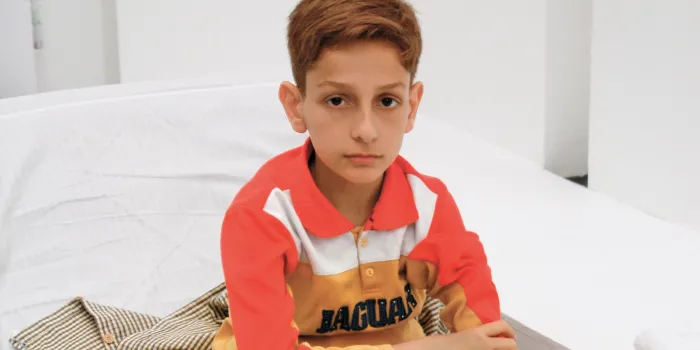The minimum amount of clotting factor a country requires to avert death in life-threatening instances is 1 international unit (IU) per capita of population. This is the bare minimum, and there are countries around the world where this amount is far from reality.
Since it began in 1996, the World Federation of Hemophilia (WFH) Humanitarian Aid Program has channeled more than 462 million IUs of treatment products to more than 100,000 people in need in 90 countries. Before this program expanded, donations were sporadic and existing commitments allowed for emergency relief only in dire situations.
In 2015, Bioverativ and Sobi answered the call to help build the WFH Humanitarian Aid Program into a more sustainable and predictable solution. The companies’ visionary contribution translates into 500 million IUs over five years (2015-2020). Additional companies have accepted the challenge, including an eight-year commitment (2014-2021) from Grifols totaling 200 million IUs, a 10-year commitment (2009-2018) from CSL Behring of 22 million IUs and a three-year agreement (2017-2019) with Green Cross for 6 million IUs. What’s more, the Project WISH and Project Recovery initiatives allow for the manufacturing of clotting factor concentrates from previously discarded cryopaste to provide treatment products to countries most in need.
In 2014, 21 million IUs of treatment products were channeled through the WFH Humanitarian Aid Program. In 2016, donations rose to over 140 million IUs from all contributors. This meant a rise from 2,119 patients treated in 2014 to over 14,500 patients reported treated in 2016.
This expansion brought the WFH Humanitarian Aid Program beyond the traditional model of channeling treatment products. The World Federation of Hemophilia (WFH) infrastructure delivers treatment to countries that would never have this kind of opportunity.
“The WFH Humanitarian Aid Program is an integral part of addressing the major gaps that exist for the majority of people in the world living with a bleeding disorder,” says Mark Skinner,WFH USA president.
The National Hemophilia Foundation (NHF) and its chapters responded to this call to action from WFH USA to support the WFH Humanitarian Aid Program. A record number of chapters participated in the matching grant program to help fund the WFH Humanitarian Aid Program. An ambitious objective was set of raising $200,000 to contribute to the annual shipping costs of the program and support of the operational programming. This goal was surpassed with the help of NHF and its chapters. Continued support, such as that provided by NHF and its chapters, is what is needed to help strengthen the operational success of the WFH Humanitarian Aid Program.
Treatment is prohibitively expensive for most people with a bleeding disorder. Because of limited access to diagnosis and treatment in many developing countries, people with severe hemophilia in these areas often do not survive to adulthood. The direct impact of this program’s sustainable and predictable model for humanitarian aid demonstrates significant transformation within the global bleeding disorders community. The number of surgeries, able to occur because of product donations from all contributors, has climbed from 21 in 2014 to 1,237 as of May 2017. The immediate impact on quality of life is evident for those living with the debilitating effects of joint damage and those putting off other necessary surgeries because of the lack of treatment products.
Prior to the expansion of the program with the Bioverativ and Sobi donation, people with bleeding disorders in developing countries had no opportunity to be put on a prophylaxis treatment regime, the standard of care in most of the developed world. In 2016, 852 people were placed on prophylaxis, with 129 more added to this regime as of mid-2017.
“The WFH Humanitarian Aid Program has transformed, over the past two years, into one of the most effective global programs in addressing the significant treatment gaps that occur for those living without much-needed care,” says WFH President Alain Weill.
The integration of a sustainable WFH Humanitarian Aid Program, along with all the healthcare development work of the WFH, means there is a significant shift toward improving hemophilia care and treatment in countries most in need. All members of the community can look at how they can help improve hemophilia care and treatment for their brothers and sisters in the bleeding disorders community. Working with a global network of 134 WFH national member organizations, such as NHF and its chapters, along with healthcare professionals, industry partners and contributors, and stakeholders, the WFH and WFH USA will be able to achieve their vision of “Treatment for All.”
For more information about the WFH Humanitarian Aid Program and how you can support this important initiative, visit treatmentforall.org.

